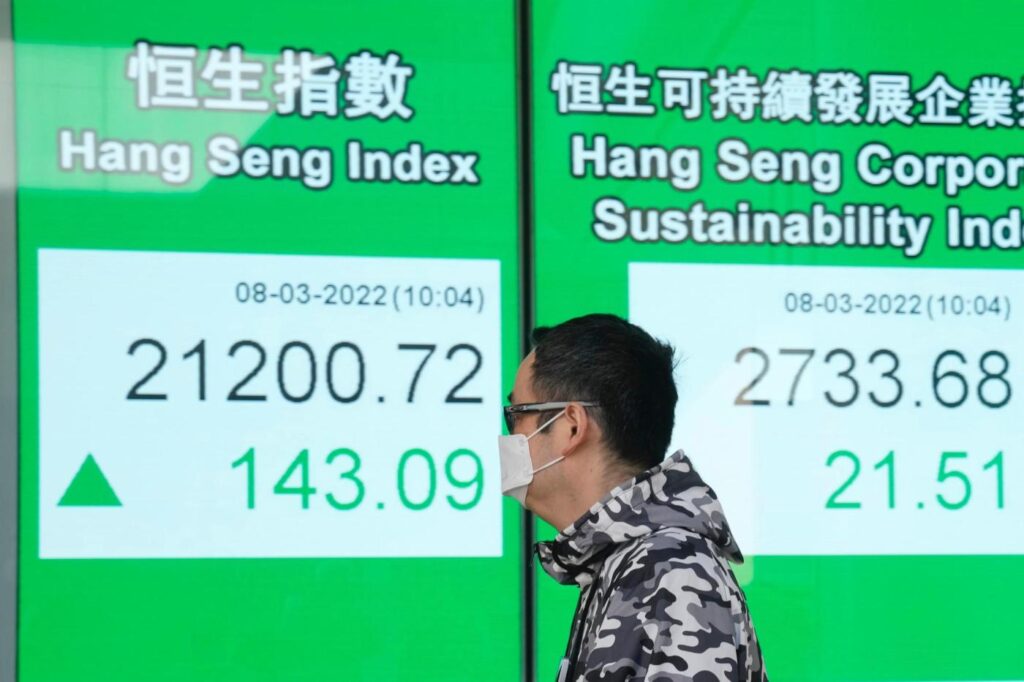
By YURI KAGEYAMA
TOKYO (AP) — World markets were mixed Tuesday, with European benchmarks and U.S. futures turning higher after Asian shares extended losses.
Surging prices for oil and other vital commodities have been rattling global markets and the situation remains uncertain as investors search for safe havens from expanding sanctions against Russia.
Oil prices were relatively steady after surging past $130 a barrel the day before. U.S. benchmark crude gained $2.16 to $121.56 a barrel in electronic trading on the New York Mercantile Exchange. Brent crude, the international standard, added $2.43 to $125.64 a barrel.
Russian troops were making significant advances in southern Ukraine early Tuesday but were stalled in some other regions. Ukrainian officials were skeptical over a Russian plan for safe corridors to let civilians escape fighting after earlier efforts to establish evacuation routes crumbled amid renewed attacks.
France’s CAC 40 added 2.2% to 6,112.21 while Germany’s DAX climbed 1.4% to 13,010.32. Britain’s FTSE 100 gained 0.2% to 6,971.04. U.S. futures also advanced, with the contract for the Dow industrials up 0.3$ while the contract for the S&P 500 gained 0.5%.
Analysts expect the war in Ukraine to top the agenda for some time to come and say the full impact of the conflict is yet to be fully taken into account.
Worries are growing that Russia’s invasion of Ukraine will squeeze already tight supplies of oil. Russia is one of the world’s largest energy producers, and oil prices already were high before the attack because the global economy is demanding more fuel after disruptions to travel and manufacturing from the pandemic.
But reports Tuesday highlighted plans by European leaders to find ways to reduce the region’s current heavy reliance on Russian natural gas.
“Disruptions to energy markets and the possibility of a geopolitical paradigm shift make for a highly unpredictable environment,” Stephen Innes of SPI Asset Management said in a commentary. However, he added, “we should reach a point at which equities start to price in a light at the end of the tunnel.”
Japan’s benchmark Nikkei 225 shed 1.7% to finish at 24,790.95. Australia’s S&P/ASX 200 sank 0.8% to 6,980.30. South Korea’s Kospi slipped 1.1% to 2,622.40. Hong Kong’s Hang Seng lost 1.4% to 20,765.87, while the Shanghai Composite tumbled 2.4% to 3,293.53.
India’s Sensex was the rare gainer, adding 1% to 53,345.24.
The price of gold — a measure of nervousness on Wall Street — jumped more than $22 an ounce to $2,018.00.
Nickel, crucial for batteries and steel making among other vital manufacturing, jumped 44.3% to $42,995.00 per metric ton on the London Metal Exchange. The exchange suspended trading after the price of the metal’s three-month contract more than doubled to over $100,000 a ton.
The exchange said the evolving situation in Russia and Ukraine had led it to suspend trading at least for Tuesday and possibly longer “on orderly market grounds.”
Russia is a key supplier of nickel. It and Ukraine together also supply 13% of the world’s titanium, which is used to make passenger jets and 30% of the palladium, which goes into cars, cellphones and dental fillings.
In currency trading, the U.S. dollar rose to 115.50 Japanese yen from 115.32 yen. The euro cost $1.0915, up from $1.0853.
